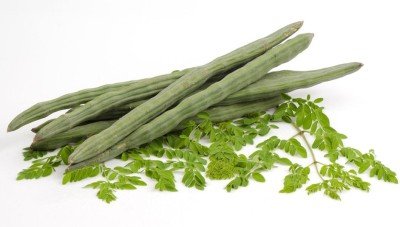Project Report For Drumstick Vegetable Farming
Introduction
Project report for Drumstick Vegetable Farming is as follows.
Drumstick (Moringa oleifera) is a highly valued vegetable in India, known for its nutritional and medicinal properties. It is a fast-growing, drought-resistant tree that can grow up to 10 meters tall. The leaves, pods, and seeds of the drumstick tree are all edible and are commonly used in a variety of Indian dishes, such as sambar, dal, and stir-fries. In India, the drumstick is mostly cultivated in the southern and western states, such as Tamil Nadu, Andhra Pradesh, and Maharashtra.
The tree thrives in warm, tropical climates and requires well-drained soils with a pH range of 6.0 to 7.5. It is a hardy plant that can withstand temperatures as low as 5 degrees Celsius and can survive with little irrigation. Propagation of drumstick is usually done by seed, although vegetative propagation methods, such as air layering, root cutting and grafting, are also used. The seeds should be sown in well-prepared beds, and seedlings should be transplanted when they reach a height of 15-20 cm. Young plants need to be protected from strong winds and heavy rainfall, and they should be given shade during the initial stages of growth.

Farmers should keep a regular eye on the irrigation, as the tree can tolerate drought conditions but to get the best yield regular watering is necessary, so as to ensure good growth and development of the tree. Fertilizer application is also important for optimal growth and yield. Drumstick trees respond well to a variety of fertilizers, such as cow dung, neem cake, and vermicompost.
Drumstick trees typically begin to bear fruit within 6 to 8 months of planting, and a mature tree can produce up to 100 or more pods per season. The pods are ready for harvest when they are about 30-35 cm long and are still green.
They should be picked by hand, taking care not to damage the tree or the developing flowers and fruit. The yield of drumstick per tree can vary depending on the variety, but it can be as high as 20-25 kg of pods per tree per year. Drumstick is a highly perishable vegetable and should be sold as soon as possible after harvest to prevent spoilage. It is often sold fresh in local markets, but it can also be processed into powder, oil, and other value-added products.
Project Report Sample On Drumstick Vegetable Farming
Get Completely Custom Bankable Project Report
Drumstick farming is not only profitable but also promotes sustainable agriculture practices, as the tree is highly resilient, and the leaves and seeds are rich in nutrients. The leaves of drumsticks contain high levels of vitamin A, vitamin C, calcium, and iron, which makes them an excellent source of nutrition for both people and livestock. Drumstick farming is, therefore, highly beneficial for farmers, both in terms of economic returns and nutritional value.
Market Potential Of Drumstick Vegetable Farming
The global drumstick vegetable market is expected to grow at a CAGR of 3.5% between 2020 and 2028, with a market value of USD 6.9 million in 2020.
Expenses

Product Cost Breakup

Reveneue Vs Expenses

Market Trend

Moringa oleifera is known as the drumstick tree, the miracle tree, the ben oil tree, and the horseradish tree. One of the primary drivers of market growth is increased consumer awareness of the plant’s health benefits. It has antifungal, antiviral, antidepressant, and anti-inflammatory properties that aid in the treatment of a variety of diseases. Furthermore, it is easily grown in tropical and subtropical regions at a low cost, resulting in increased use of the plant in a variety of applications. It is also one of the most effective products for treating malnutrition in children under the age of three. Considering all of the aforementioned factors, market demand for these products is increasing.
Moringa contains a variety of beneficial compounds, including vitamin A, vitamin B1, folate, calcium, potassium, iron, and zinc. It is also very low in fat and has no harmful cholesterol. Moringa is a popular vegetable among South Indians for its flavour and delicious taste in sambar and curry preparation.
The product’s popularity is growing as a result of its high nutritional value and low price, boosting the market’s growth. Although the product has several advantages, there are some market entry barriers, such as technological requirements for drying moringa and organic certification requirements. Moringa leaf drying necessitates the use of appropriate drying equipment as well as logistical planning. Moringa leaves must be processed immediately after harvesting to avoid quality degradation.
